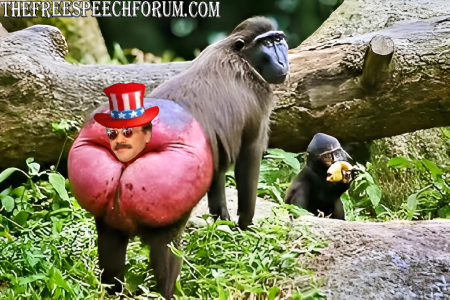Thank you Dr VikingThe publication of the human and chimp DNA sequences made possible a comparison. However, even this is problematic because the chimp genome was not built from scratch. Small pieces of the chimp DNA were first sequenced; that is, the order of the chemical letters was determined using chemical procedures in laboratories. These small strings of ‘letters’ were then aligned with the human genome in the places the evolutionists thought they should go (using computers to compare and place the segments). Then the human genome was removed, leaving a pseudo-chimp genome that assumed common ancestry(evolution), creating a mongrel sequence that is not real. The assumption of evolution in constructing the chimp genome in this way would make it look more like the human genome than it really is. But even with this evolutionary bias, the actual differences are much bigger than 1%.
In 2007 Science published an article on the similarity of human and chimp DNA titled, “Relative differences: the myth of 1%”.2 Author Jon Cohen queried the continued use of the 1% figure, citing comparisons following the publication of the draft chimp DNA sequence of around 5% difference. And yet the 1% myth is perpetuated in 2012 in the same journal.
Illustrating how wrong this is, in 2012 Drs Jeffrey Tomkins and Jerry Bergman reviewed the published studies comparing human and chimp DNA.5 When all the DNA is taken into account and not just pre-selected parts, they found,
In other words, the differences are huge, possibly greater than 19%. Indeed, Dr Tomkins made his own thorough comparison and found the difference to be ~30%.6 Also, the Y-chromosomes, found only in males, are radically different, contrary to evolutionists’ expectations.7
The large difference does not tally with evolutionary expectations but it is consistent with us being created separately from the animals.
Comparing two complex genomes is quite difficult. Assumptions have to be made about the importance of various parts of the DNA and the significance of different types of differences. For example, what do you do with human genes that are absent from chimps and vice versa? The tendency has been to ignore them and only compare the similar genes.
Many comparisons have involved only the protein-coding genes (only 1.2% of the DNA, and many protein-coding genes that are shared are indeed quite similar8), with the assumption that the rest of the DNA is ‘not important’ or even ‘junk’. However, this view is no longer tenable; almost all the DNA probably has a function, again contrary to evolutionists’ expectations.9 But even if ‘junk’ DNA were non-functional, the differences here are much, much greater than in the protein-coding regions and must be included when assessing differences. We are not 99% identical; nothing like it.
-
Pat Flood (@rebarcock) passed away 9/21/25. Pat played a huge role in encouraging the devolopmemt of this site and donated the very first dollar to get it started. Check the thread at the top of the board for the obituary and please feel free to pay your respects there. I am going to get all the content from that thread over to his family so they can see how many people really cared for Pat outside of what they ever knew. Pat loved to tell stories and always wanted everyone else to tell stories. I think a great way we can honor Pat is to tell a story in his thread (also pinned at the top of the board).
You are using an out of date browser. It may not display this or other websites correctly.
You should upgrade or use an alternative browser.
You should upgrade or use an alternative browser.
Extraterrestrials
- Thread starter OldBuzzard
- Start date
Thank you Dr Viking
It was a copy and paste.
Copy and pasting is the key to looking smart on the internetIt was a copy and paste.
D
Deleted member 2886
Guest
Copy and pasting is the key to looking smart on the internet
D
Deleted member 2886
Guest
GreenNewMe
Poster
i agree and i think its one of those things where if you say a word over and over it will start to sound weird like try saying egg right now just over and over it starts to sound like a caveman word lol you will see what i mean try it nowOf course, because I have no guns or anything of that nature......by the way what is a gun, weird word. Never heard of the word either, "gun" hmmmm.
weaponoffreedom
Elite
No not quite, just not up on the lingo fool.I took it as you're a geezer or a boomer
weaponoffreedom
Elite
Something to that affect would seem to be more plausible than interstellar type mofosI believe aliens are real
I don’t believe they are from another planet or solid system whatever.
I believe they are from another dimension. The Annanaki were real IMO.
Fuck youNo not quite, just not up on the lingo fool.
I'll whip your ass pussy. Fuck w me again fag. Let's see if I'm joking.Something to that affect would seem to be more plausible than interstellar type mofos
@TJHall1
@TjHall1_lovescock .
I'll use my last knock out on your fag ass.pussy
weaponoffreedom
Elite
who is this TJHALL fella yall hate so much?I'll whip your ass pussy. Fuck w me again fag. Let's see if I'm joking.
@TJHall1
@TjHall1_lovescock .
I'll use my last knock out on your fag ass.pussy
weaponoffreedom
Elite
Did you mistake me for him, are you drunk?I'll whip your ass pussy. Fuck w me again fag. Let's see if I'm joking.
@TJHall1
@TjHall1_lovescock .
I'll use my last knock out on your fag ass.pussy
Make your jokes pussyDid you mistake me for him, are you drunk?
Mr.Fitzwell
Legendary
@TJHall1 wasn't much of a bother... @TjHall1_lovescock is a troll account I guess...just not a good onewho is this TJHALL fella yall hate so much?
Sorry other folks of Planet Earth. Please let us know where you are proud to be from
..we got our 1st pay per view.
I'll knock that pussy out faster than Tyson in the day
..we got our 1st pay per view.
I'll knock that pussy out faster than Tyson in the day
Fuck that pussy. He brings nothing to the site. Let him keep it up. I've dealt w less problems then him before@TJHall1 wasn't much of a bother... @TjHall1_lovescock is a troll account I guess...just not a good one
Mr.Fitzwell
Legendary
Upstate SC babayyy...lemme know if and I'll try to be thereSorry other folks of Planet Earth. Please let us know where you are proud to be from
..we got our 1st pay per view.
I'll knock that pussy out faster than Tyson in the day
I wouldn't have it any other wayUpstate SC babayyy...lemme know if and I'll try to be there
Mr.Fitzwell
Legendary
Muh Cock!I wouldn't have it any other way
weaponoffreedom
Elite
so you are drunk..........well in that case, fuck you tooMake your jokes pussy
weaponoffreedom
Elite
Are you takling about me or TJHALL?Fuck that pussy. He brings nothing to the site. Let him keep it up. I've dealt w less problems then him before
Fuck you pussyAre you takling about me or TJHALL?
Mr.Fitzwell
Legendary
Lol why u tryna fight, Rebar? Wtf happened?Fuck you pussy
weaponoffreedom
Elite
Oh ok, are you mad you check did not come? Or did I hurt your feelings in some other womanly way?Fuck you pussy
I have a disease. It's called fuck that pussy.Lol why u tryna fight, Rebar? Wtf happened?
Mr.Fitzwell
Legendary
Welp, okie dokie then...I have a disease. It's called fuck that pussy.
You did nothing wrong pussy boy. I'm a bully and you're a pussy boy6Oh ok, are you mad you check did not come? Or did I hurt your feelings in some other womanly way?
Charge your phone bro…..or tell him too. These days you will need it!
I hatebtgevbullzgzuCharge your phone bro…..or tell him too. These days you will need it!
weaponoffreedom
Elite
Oh I see, you are a "bully". Ok, well let me see......do you like top or bottom?You did nothing wrong pussy boy. I'm a bully and you're a pussy boy6
weaponoffreedom
Elite
Me too.... movement?I hatebtgevbullzgzu
Mr.Fitzwell
Legendary
Cheap, but some cool watchesMe too.... movement?
I'll beat your ass. I'm no rube faggit. Keep it up. You're giggling Luke a scared bitch. I hadn't even smirked. You've been a pussy boy your entire life. Fucking Old douche bag.Oh I see, you are a "bully". Ok, well let me see......do you like top or bottom?
You're too big a pussy to do a fucking thing. Fucking fag
D
Deleted member 2886
Guest
D
Deleted member 2886
Guest
weaponoffreedom
Elite
Go couch ninjas!I'll beat your ass. I'm no rube faggit. Keep it up. You're giggling Luke a scared bitch. I hadn't even smirked. You've been a pussy boy your entire life. Fucking Old douche bag.
You're too big a pussy to do a fucking thing. Fucking fag
weaponoffreedom
Elite
Where you at biznatch?I'll beat your ass. I'm no rube faggit. Keep it up. You're giggling Luke a scared bitch. I hadn't even smirked. You've been a pussy boy your entire life. Fucking Old douche bag.
You're too big a pussy to do a fucking thing. Fucking fag
Did that check come in?
Still alive. Had the hurricane to deal with and then was out of town for work.What ever happened to the Bigfoot guy?
@BigfootNole is you alive erz got grape aped?
Similar threads
- Replies
- 10
- Views
- 333
- Replies
- 11
- Views
- 319
- Replies
- 10
- Views
- 114






















